MIRACLE data analysis tools
7) Elementary
Current Method (ECM) for combining multi-satellite FAC data and ground
magnetometer data to obtain distributions of true ionospheric currents:
- Short description of the
analysis
method:
The Elementary Current Method
(ECM)
combines spatial ground magnetic field measurements from a magnetometer
network (like IMAGE) with field-aligned current (FAC) estimates from a
fleet of satellites (like CLUSTER II), mapped down to the ionosphere,
to
calculate 2D distributions of the true (not equivalent) ionospheric
currents.
The basic idea is that the ground
magnetic measurements give the curl of the true current system, while
the
FAC give its divergence. This information is combined to the wanted
true
current system by using spherical elementary current systems that
represent
"point sources" (Green's functions) of the curl and divergence operator
on the sphere.
If additionally the ionospheric
electric field is measured on the analysis area by a coherent scatter
radar
(like STARE), also the Hall and Pedersen conductance distributions can
be calculated.
For more details: see
Literature
(below)
- Input data requirements:
Spatial input data of the ground
magnetic
field, and of the field-aligned currents (FACs) as measured by the
satellites,
mapped down to the ionosphere.
To obtain 2D FAC distributions
from the satellites, it is of advantage if the ionospheric situation to
be studied can be assumed stationary for the time that either:
- the ionospheric feature
moves
over
the satellites' footpoints, or
- the satellites'
footpoints
move over
the analysis region selected, or
- a combination of the
above.
Then, FAC data of different
timesteps
can be reduced to a reference timestep, with respect to the velocity of
the ionospheric feature and/or of the satellites' footpoints, to obtain
a more complete 2D FAC distribution.
- Output quantities:
Spatial distributions of true
ionospheric
currents. If 2D electric field data is available on the modeling
region,
spatial distributions of conductances are an additional output.
- Literature:
- Amm, O., The elementary current method for calculating
ionospheric current systems from multi-satellite and ground
magnetometer
data, J. Geophys. Res., 106, 24843, 2001.
- Amm, O., K. Kauristie, T.I. Pulkkinen, M.J.
Engebretson,
R.A. Greenwald, H. Lühr, and T. Moretto, Combining multi-point
spacecraft
and two-dimensional ground-based observations: Theory and example of an
IMF BY-related cusp current system, Proc.
Cluster II workshop, ESA
SP-449,
327, 1999.
- Amm, O., Ionospheric elementary current systems
in
spherical
coordinates and their application, J.
Geomagn. Geoelectr., 49, 947,
1997.
- Example plots for a modeled
case
of a dark plasma vortex:
To illustrate the method, we use
a
model of a dark plasma vortex that moves eastward over the MIRACLE
field
of view with a velocity of 4 km/s. We assume that the vortex is
stationary
for the 2 minutes that it needs to pass over the central MIRACLE field
of view. The model of the plasma vortex comprises the main results of a
real event study of such an ionospheric feature that was recently
conducted
by Kosch et al. (JGR 105, 24889, 2000).
This is the input
data: FAC distribution that CLUSTER II
would
observe during the 2 minutes when the vortex passes eastward over the
MIRACLE
array. The FAC data of the different timesteps is reduced to a central
reference timestep with respect to the vortex's velocity (upper panel).
The footpoints and conjugate magnetic field lines of the CLUSTER II
satellites
at the reference timestep are shown in the lower panel, for a typical
pass
over the central MIRACLE field of view.
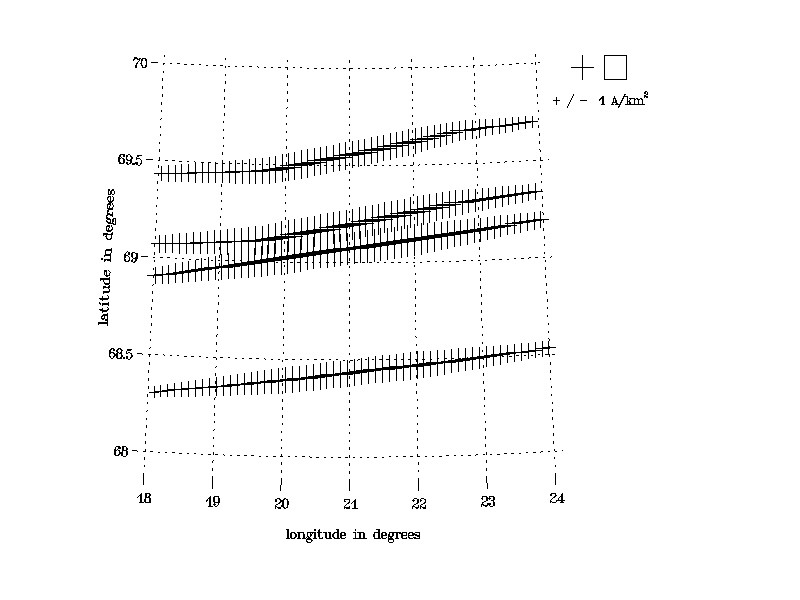
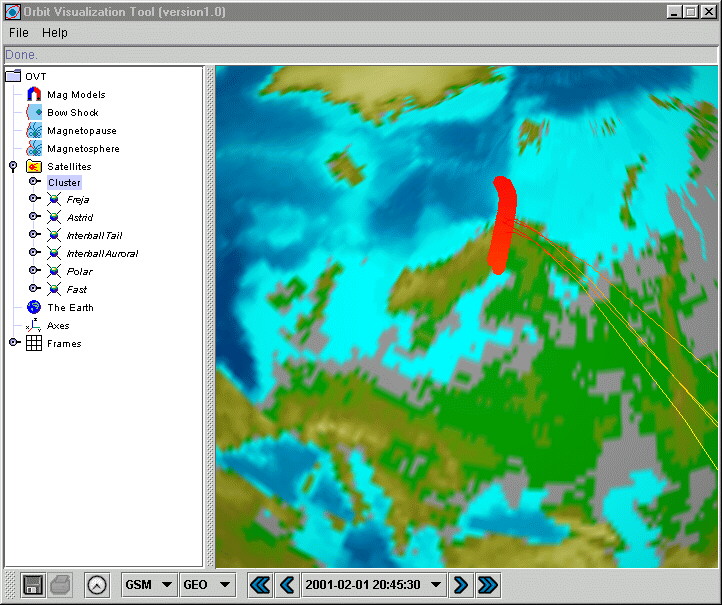
Ground magnetic field
signature
(rotated clockwise by 90 degrees) that the IMAGE network would observe
at the reference timestep (numbers: vertical downward component):
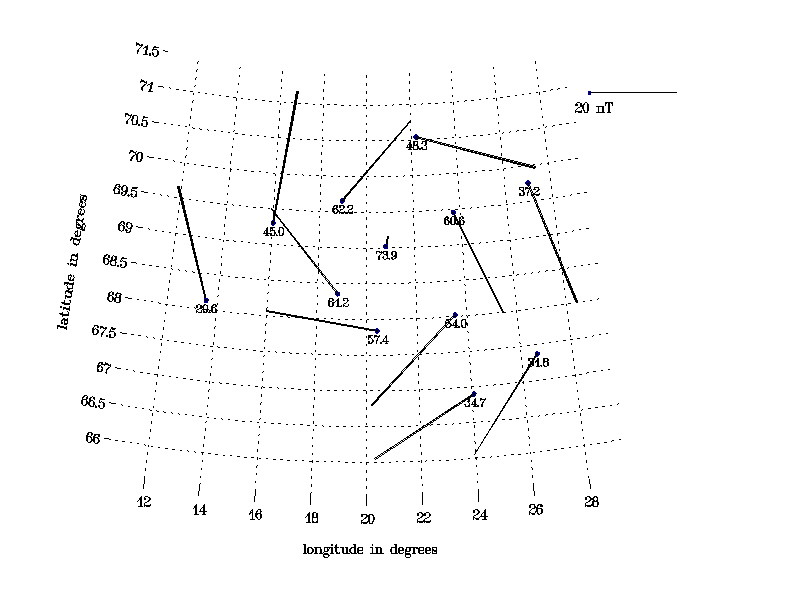
Output:True
(not equivalent) ionospheric currents obtained by the Elementary
Current
Method (ECM):
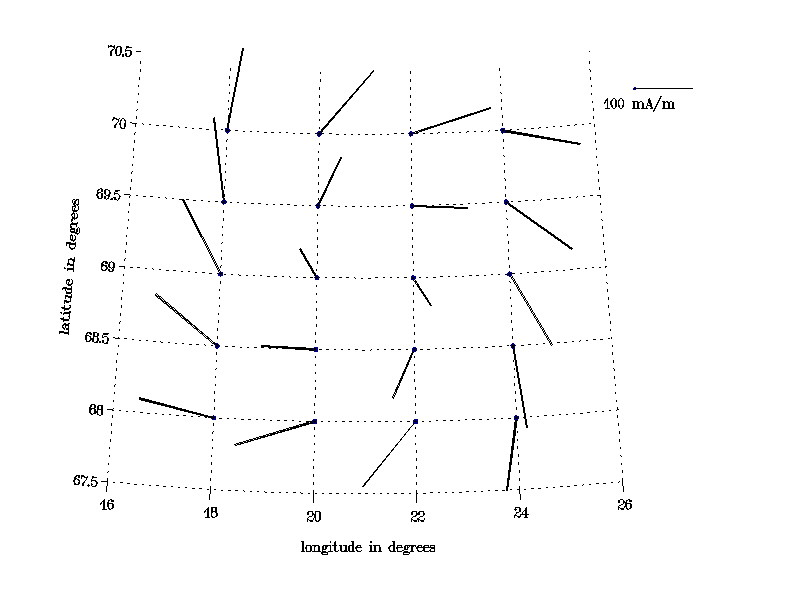
- Optional, additional input:
Electric field distribution measured by the STARE coherent scatter
radar:
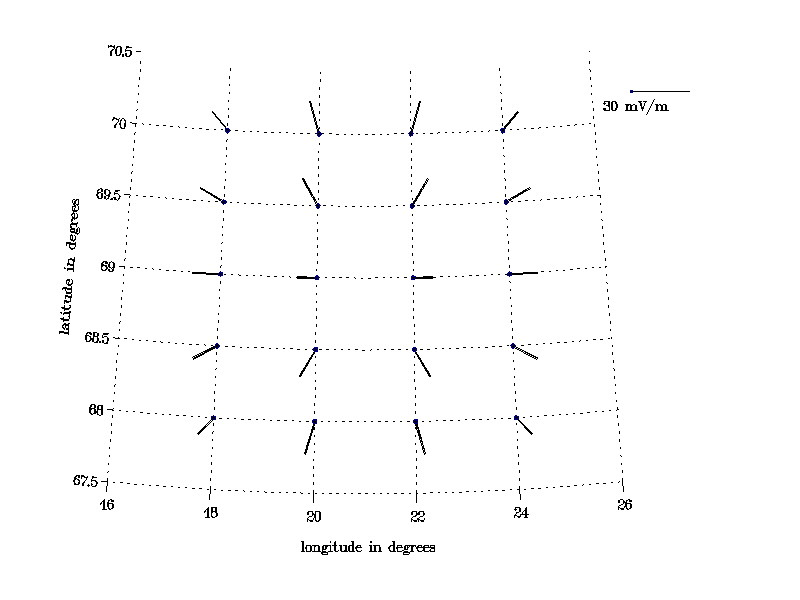
-> Additional output:
Hall conductance distribution
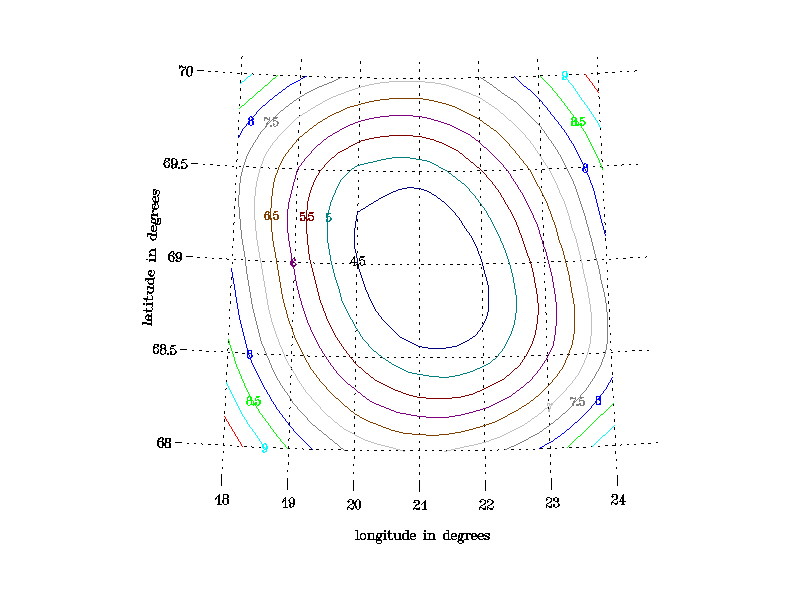
and Pedersen conductance
distribution:
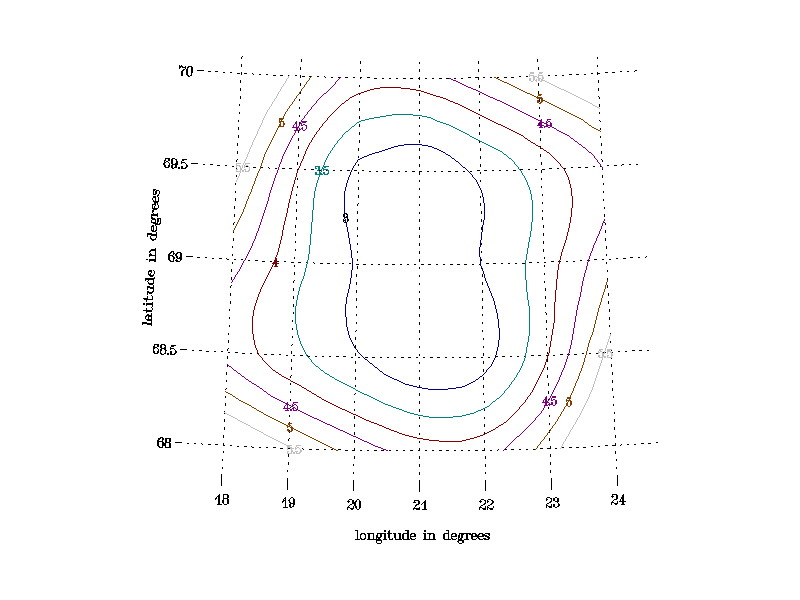
For further questions and
proposals
of events to be analysed, contact Olaf
Amm.
Maintained by: Olaf
Amm
Latest update: 18.03.2004








